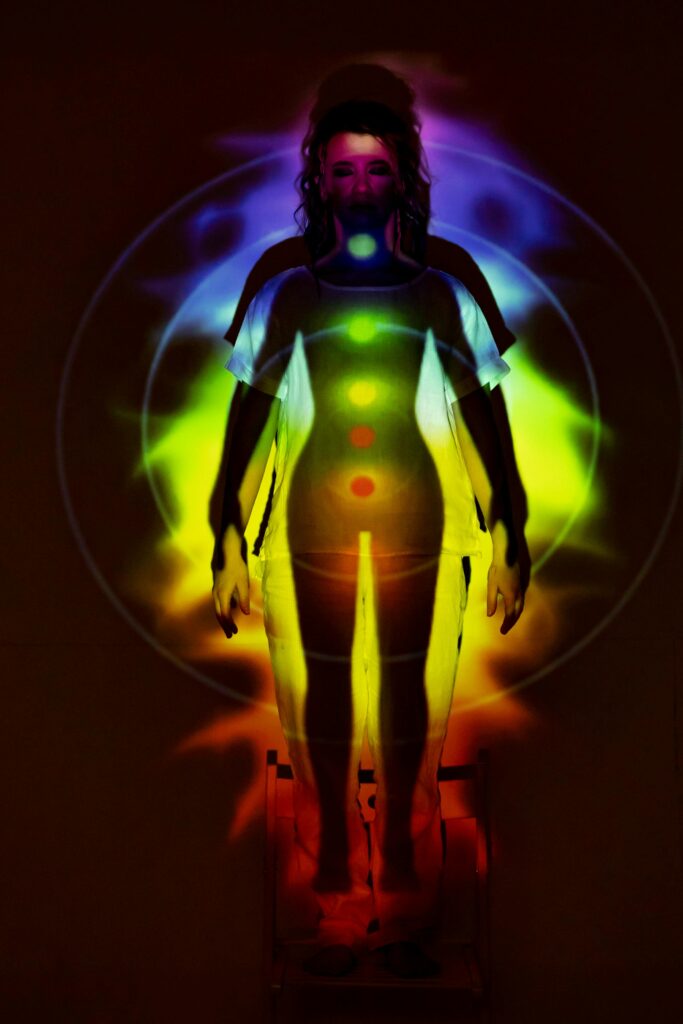Welcome to the Mysterious World of Reiki for Beginners
If you’ve ever found yourself scrolling through the internet at 2 AM, wondering if there’s a magical way to reduce stress, feel more balanced, and maybe—just maybe—channel some mystical energy into your daily life, congratulations! You’ve stumbled upon Reiki for Beginners, the ancient healing art that sounds suspiciously like a Jedi mind trick but is actually a deeply relaxing and fascinating practice.
In this deep dive into the world of Reiki, we’re going to explore what it is, how it works (or at least how people say it works), and what to expect when you first embark on your Reiki journey. Will you develop supernatural powers? Will your cat finally stop judging you? Read on to find out!
What Exactly Is Reiki for Beginners?
First things first: Reiki (pronounced RAY-kee, not “reeky”—we promise, it doesn’t smell) is a Japanese healing technique that involves the gentle laying of hands on or near the body to promote relaxation and energy flow. It was developed by Mikao Usui in the early 20th century, and despite what some might assume, he was not a wizard, a time traveler, or a secret government experiment.
The word “Reiki” comes from two Japanese words: Rei, meaning “universal” or “spiritual wisdom,” and Ki, meaning “life energy.” Put together, Reiki essentially means “universal life energy,” which sounds impressive, but don’t worry—you won’t be expected to power your home with it.
The Science (or Lack Thereof) Behind Reiki for Beginners
Now, let’s address the skeptical elephants in the room. Reiki for Beginners is often described as an energy healing practice, but modern science has yet to confirm whether we can actually manipulate life energy with our hands. That being said, scientific studies have shown that Reiki can reduce stress, improve relaxation, and help with overall well-being. So, whether it’s the placebo effect, the power of human touch, or actual mystical energy flowing through the universe, something is definitely happening!
What to Expect in Your First Reiki Session
So, you’ve bravely decided to book a Reiki session—perhaps because a friend swears by it, or because you’re just curious to see if you can become an energy conduit like Doctor Strange. Here’s what you can expect:
1. The Mysterious Reiki Practitioner
When you arrive for your Reiki session, you’ll be greeted by your Reiki practitioner, who may exude an aura of calmness that makes you feel both relaxed and slightly suspicious that they know all your secrets. They will likely ask you about your physical and emotional well-being, not because they’re nosy, but because Reiki is all about intention and personal energy.
Join Our Mailing List
Register now to get our hints and tips newsletter directly to your inbox
2. The Bed of Tranquility (or Massage Table, if You Prefer)
Unlike a deep-tissue massage, Reiki does not involve kneading, poking, or the awkward “Oops, did I just break your spine?” moments. Instead, you’ll lie fully clothed on a comfortable massage table while the practitioner lightly places their hands on or near various energy centers on your body. No oils, no lotions, no chanting—just pure, unadulterated energy work.
3. The Sensations: Warmth, Tingles, and the Occasional Floating Feeling
Many people report feeling warmth or tingling where the practitioner’s hands are placed. Others experience deep relaxation, visions of colors, or even a floating sensation (don’t worry, you haven’t left your body—probably). Of course, there’s always the possibility that you’ll feel absolutely nothing, in which case, congratulations! You’ve mastered the art of overthinking during relaxation.
How Reiki for Beginners Works (or at Least, How People Say It Works)
At its core, Reiki operates on the idea that life energy (also known as Ki, Qi, or “that stuff you wish you had more of on Monday mornings”) flows through all living things. When this energy is blocked or unbalanced, it can lead to stress, fatigue, and general grumpiness.
Reiki practitioners act as conduits for this universal energy, helping to rebalance and clear these blockages. Think of them as cosmic plumbers, unclogging your energy pipes so that you can function at full capacity.
The Chakras and Energy Flow in Reiki for Beginners
Many Reiki practitioners work with the body’s seven main chakras, or energy centers. If you’ve ever been to a yoga class where someone mentioned chakras and you nodded along pretending to understand, here’s a quick breakdown:
- Root Chakra (Base of Spine) – Stability, security, and resisting the urge to panic when the WiFi goes down.
- Sacral Chakra (Lower Abdomen) – Creativity, emotions, and making peace with the fact that you’ll never be great at watercolor painting.
- Solar Plexus Chakra (Upper Abdomen) – Confidence, personal power, and knowing you deserve that last slice of pizza.
- Heart Chakra (Center of Chest) – Love, compassion, and sending passive-aggressive emails less often.
- Throat Chakra (Throat, obviously) – Communication and resisting the urge to yell at slow walkers.
- Third Eye Chakra (Forehead) – Intuition and trying to figure out if someone is lying about their Netflix password.
- Crown Chakra (Top of Head) – Spiritual connection and the ability to stay calm in a traffic jam.
Reiki aims to keep these chakras balanced, ensuring that your energy flows smoothly, and that you’re not constantly one inconvenience away from a full-blown existential crisis.
Reiki for Beginners: Learning to Do It Yourself
So, you’ve had your first Reiki experience, and now you’re wondering if you, too, can become a Reiki practitioner and harness the power of the universe (or at least get better at calming yourself down before replying to annoying texts). The answer is yes!
Becoming a Reiki Practitioner
Reiki is a gentle yet powerful energy healing practice that is traditionally learned in three progressive levels. Each level deepens the practitioner’s understanding of energy work, allowing them to expand their ability to heal themselves and others. The training is both a personal and spiritual journey, often bringing about profound transformations in one’s awareness and well-being.
Reiki Level 1 (Shoden) – The Foundation of Energy Healing
The first level, Shoden, focuses on self-healing and the basics of working with energy. At this stage, practitioners are introduced to the fundamental principles of Reiki, including the history of the practice, the concept of life force energy (Ki), and how energy flows through the body.
A major component of Level 1 training is learning how to channel Reiki energy through the hands. Practitioners are taught basic hand positions for self-treatment and for working on others. This stage emphasizes self-healing as a crucial step—before helping others, it’s important to first balance and nurture your own energy.
Another key aspect of Level 1 is heightening energy sensitivity. Through practice, students begin to notice subtle shifts in energy, developing an awareness of how it feels when energy is stagnant, blocked, or flowing freely.
Though Reiki Level 1 is primarily about self-practice, students may also begin working on friends, family, and even pets, allowing them to experience the benefits of Reiki in a safe and supportive way.
Reiki Level 2 (Okuden) – Expanding Healing Abilities
At the second level, Okuden, practitioners deepen their knowledge and expand their ability to work with Reiki in more advanced ways. This level introduces Reiki symbols, which are powerful tools that help direct and amplify energy. These symbols can be used for different purposes, such as enhancing healing, promoting mental clarity, and sending Reiki over long distances—yes, you read that right, you can send Reiki across space and time!
Distance healing is a fascinating component of Level 2. Through specific techniques, practitioners learn how to send Reiki energy to someone who isn’t physically present. This can be beneficial for supporting loved ones in different locations, sending healing energy to past traumas, or even promoting a sense of peace for future events, like an important meeting or medical procedure.
Many practitioners feel a significant shift after completing Level 2. The connection to Reiki energy deepens, intuition becomes stronger, and healing work becomes more refined. At this stage, practitioners may begin offering Reiki sessions professionally if they choose.
Reiki Master Level (Shinpiden) – Mastery and Teaching
The third and highest level, Shinpiden, is known as the Reiki Master level. Reaching this stage signifies a deep commitment to Reiki as both a personal and professional practice. While many people associate the word “Master” with an end goal, in Reiki, mastery is viewed as an ongoing journey of learning and growth.
At this level, practitioners receive the Master Symbol, which enhances their ability to channel Reiki energy. They also learn advanced techniques, including methods for personal development, spiritual connection, and working with more refined energy frequencies.
One of the most significant aspects of Reiki Master training is the ability to attune and teach others. Attunements are sacred ceremonies in which a Reiki Master opens the energy channels of a student, allowing them to access Reiki energy more effectively. These attunements serve as energetic initiations, strengthening the practitioner’s ability to work with and transmit healing energy.
Although becoming a Reiki Master doesn’t mean you’ll suddenly have mystical superpowers (no flying or lightning bolts, unfortunately), it does provide a deeper understanding of energy healing, consciousness, and the connection between mind, body, and spirit.
The training involves attunements, which are special ceremonies where a Reiki Master helps open your energy channels. No, it’s not like getting superpowers overnight, but it does give you the tools to work with energy in a more intentional way.
Final Thoughts on Reiki for Beginners
Reiki for Beginners is a fascinating journey, whether you’re drawn to it for relaxation, stress relief, or just to see if you can get your cat to stop glaring at you. While the scientific community remains skeptical about the mechanics of energy healing, there’s no denying that many people find Reiki to be deeply calming and transformative.
At the very least, Reiki gives you an excuse to lie down, relax, and take a break from the chaos of modern life. And honestly, isn’t that something we could all use?
So go forth, explore Reiki, and remember: even if you don’t feel the energy flowing, at least you’ll get a solid hour of uninterrupted relaxation—and that’s its own kind of magic.




